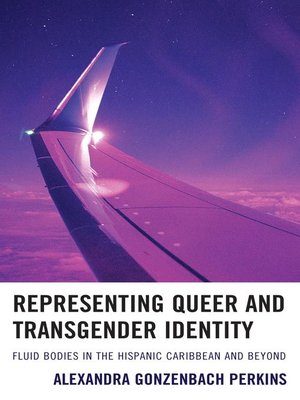Representing Queer and Transgender Identity
ebook ∣ Fluid Bodies in the Hispanic Caribbean and Beyond
By Alexandra Gonzenbach Perkins

Sign up to save your library
With an OverDrive account, you can save your favorite libraries for at-a-glance information about availability. Find out more about OverDrive accounts.
Find this title in Libby, the library reading app by OverDrive.



Search for a digital library with this title
Title found at these libraries:
| Library Name | Distance |
|---|---|
| Loading... |
Fluid Bodies traces the intersections of global movement with transgender and queer identities from authors and artists of the Hispanic Caribbean. Utilizing the theme of fluidity and travel, Fluid Bodies analyzes novels, graphic novels, theatre, and performance art. These works demonstrate how transgender and queer bodies redefine belonging, particularly national belonging, through global movement and community making practices. Through these genres, the text follows the movement of transgender and queer identities from textual spaces to spaces of the body. The gradual movement from text to body—as it occurs in these genres—demonstrates the variety of representational strategies that dismantle binary readings of gender, sexuality, and nationality.
Transgender visibility is a pressing social issue, and today's transgender moment will be a social and political necessity for years to come. Of particular importance are representations of transgender and/or queer people of color. The field of transgender representation is growing, and Fluid Bodies adds to the visibility of transgender and queer identity from the Hispanic Caribbean. By investigating the relationship between novels, graphic novels, theatre, and performance art, Fluid Bodies emphasizes how each work plays on and against the separation of language and the body, and how Hispanic Caribbean authors and artists represent transgender and queer identity in order to redefine cultural and national belonging in various geographic spaces.
Transgender visibility is a pressing social issue, and today's transgender moment will be a social and political necessity for years to come. Of particular importance are representations of transgender and/or queer people of color. The field of transgender representation is growing, and Fluid Bodies adds to the visibility of transgender and queer identity from the Hispanic Caribbean. By investigating the relationship between novels, graphic novels, theatre, and performance art, Fluid Bodies emphasizes how each work plays on and against the separation of language and the body, and how Hispanic Caribbean authors and artists represent transgender and queer identity in order to redefine cultural and national belonging in various geographic spaces.







